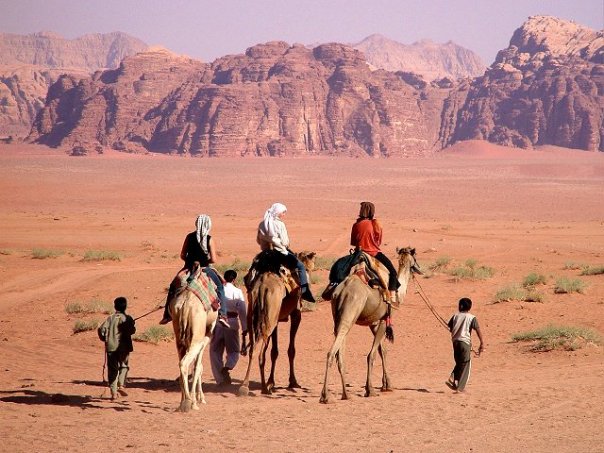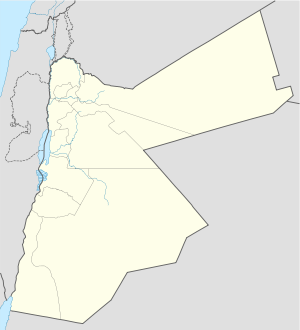 36 Hours in Abu Dhabi
36 Hours in Abu Dhabi
WHAT would you do with $600 billion in cash? If you’re the capital of the United Arab Emirates, rich in oil, the answer is easy: go shopping. Once aloof from the spendthrift ways of neighboring Dubai, Abu Dhabi — which, so far, has not experience the unrest many Arab countries are facing is now ticking off items on a five-star shopping list. Top-notch museums? New branches of the Louvre and Guggenheim are rising from the sands. High-profile events? The Abu Dhabi Grand Prix, Abu Dhabi Film Festival and Gourmet Abu Dhabi have made their debuts in recent years. Toss in a multibillion-dollar hotel project and a stunning new mosque and you have one of the world’s most ambitious new destinations.
Friday
5 p.m.
1) ON THE CORNICHE
Come early evening, all of Abu Dhabi — expat professionals from Europe, South Asian laborers, local families in white dishdashas (for the men) and black abayas (for the women) — strolls along the Corniche, a picturesque seaside walkway. It’s the perfect vantage point for taking in the city’s fast-rising thicket of skyscrapers. Finish up at the Heritage Village (Marina Mall breakwater; 971-2-681-4455; free admission), an ersatz old fortress that tries to recreate the Abu Dhabi of yore through camel enclosures, Bedouin tents and traditional artisans. At its beachfront cafe, Al Asalah (971-50-526-5575), sip a watermelon juice (15 dirhams, or $4.15 at 3.60 dirhams to $1) while watching the twinkling city skyline across the bay.
9 p.m.
2) PALACE INTRIGUE
Even if you can’t afford to make a withdrawal from the ATM that dispenses bars of gold, the gargantuan and garishly opulent Emirates Palace Hotel (emiratespalace.com) is worth a visit. Built at a cost of $3 billion, the 362-room behemoth is said to be the most expensive hotel ever built and contains some fitting hangouts. Hakkasan restaurant-lounge (971-2-690-7999; hakkasan.com) opened last year with Asian-cool décor and cocktails like the Hakkatini (orange flavored vodka, Campari, Grand Marnier, apple juice; 50 dirhams). For a traditional Emirati dinner, hit Mezlai (971-2-690-7999). Reserve an outdoor tent and sample local specialties like creamy shark velouté, sautéed chicken livers (with garlic, cinnamon and pomegranate sauce) and lamb nachif (slow cooked in zesty garlic-turmeric sauce). A three-course meal for two runs about 450 dirhams, without wine.
11 p.m.
3) GLITTERY NIGHTS
The fastest-growing part of town is the formerly dusty Yas Island (yasisland.ae), now brimming with diversions: a lush 18-hole golf course, a Formula One track, a sprawling indoor theme park (Ferrari World; see below), a marina and a host of five-star hotels. Hugh Grant, Sir Richard Branson and Prince are among the luminaries who have been spotted in the fractal-like white interior of Allure (Yas Island Marina, 971-2-565-0050; nightcluballure.com; cover, 150 dirhams). Opened last year by the Cipriani restaurant group, the glittery nightclub serves three-liter bottles of Cristal Champagne (68,000 dirhams) and Bellini cocktails (65 dirhams) to a BlackBerry-toting international crowd.
Saturday
10 a.m.
4) ISLAMIC GLORIES
It’s hard not to be awestruck as you stand on what is said to be the world’s largest handmade Persian carpet (about 65,000 square feet), gazing up at a huge, glittering chandelier in the main prayer hall of the enormous Sheikh Zayed Grand Mosque (Al Salam Street; 971-2-441-6444; szgmc.ae), which can hold more than 40,000. Opened in 2007, the marble mosque, with its 82 domes and some 1,000 columns, is a mix of Moorish, Ottoman and Mughal styles. Free tours are held on Saturday at 10 and 11 a.m. and 2, 5 and 8 p.m.
1 p.m.
5) A BOHEMIAN BREAK
Funky, bohemian and cheap are not adjectives normally used to describe anything in Abu Dhabi, but Zyara (Madinat Zayed area, next to Hilton Corniche Residence; 971-2-627-5007) is a rare bird indeed. Abstract art and couches upholstered with wild fabrics provide the décor at this cafe-restaurant, where locals and expats noodle on laptops (thanks to free Wi-Fi) and flip through Time Out Abu Dhabi. The menu ranges from French toast (22 dirhams) to savory manakish (warm flatbread rolled in spices and sesame seeds; 10 dirhams) and a dish called foul (mashed beans stewed with tomato, garlic and olive oil; 20 dirhams).
3 p.m.
6) NORMAN’S SOUK
Arabia goes avant-garde at the Souk at Central Market (Khalifa Street; 971-2-810-7810; centralmarket.ae/souk), a soaring new shopping center of geometric wood slats and colored glass that was designed by Norman Foster. Trouble finding a date? Zadina (ground floor; 971-2-658-8637) has them in abundance: plain dates (100 dirhams per kilo), dates stuffed with pistachios (125 dirhams per kilogram, or 2.2 pounds), chocolate truffles made with dates (450 dirhams per kilo), and much besides. For tea glasses (six for 400 dirhams) and other glassware etched and painted with Arabesque patterns, visit Kudu for Arts (ground floor; 971-2-627-8980; kuduforarts.com). Electronics stores, boutiques, waterpipe cafes and henna artists also fill the space.
5 p.m.
7) PEDAL TO THE METAL
Speed freaks, thrill jockeys, car buffs and lead-footed drivers will get their kicks at the futuristic Ferrari World (Yas Island; 971-2-496-8001; ferrariworldabudhabi.com), an amusement park that pays tribute to the most popular red product to come out of Italy since tomato sauce. The curvaceous complex houses pulse-quickening rides, from Formula One simulators to one of the world’s fastest roller coasters. Between thrills, check out the car exhibitions and the acrobatic musical show. Admission: 165 to 225 dirhams.
8 p.m.
8) SULTANIC CHIC
If the designer Terrance Conran had read “1,001 Nights” too many times, the result would be something like Pearls & Caviar (Qaryat Al Beri; 971-2-509-8777; pearlsandcaviar.com), a sultry den near the Shangri-La hotel with chain-mail curtains, a mosaic floor and a D.J.-spun soundtrack. The menu also melds Occident and Orient to original effect. Especially good are the tuna carpaccio (with pomegranate seeds and crispy thin bread) and tender strips of beef drizzled with hummus. The zucchini fries in a chickpea batter that are topped with a spicy tomato and red-pepper chutney are also excellent. A three-course dinner for two costs around 400 dirhams.
11 p.m.
9) DRINKS IN THE SOUK
Any lingering myths that there is no alcohol in the Islamic world will be put to rest at Souk Qaryat Al Beri (971-2-558-1670; soukqaryatalberi.com), a sprawling bazaar filled with canals, boutiques, restaurants and ample booze-soaked nightspots. Left Bank (971-2-558-1680) is a den of slick black surfaces and red banquettes where a young crowd drinks Left Bank Iced Teas (vanilla vodka, rum, cachaça, Bombay Sapphire, sour mix and ginger beer; 40 dirhams) and other creative cocktails. Everything goes white and bright at Sho Cho (971-2-558-1117; sho-cho.com), a sushi lounge whose drink list includes concoctions like the Sho Cho Infusion(Bacardi, ginger, lime, brown sugar, ginger beer; 43 dirhams).
Sunday
10 a.m.
10) HIT THE BEACH
Started in 2008 and still expanding, the new (and free) Corniche Beach is endowed with powdery sand, translucent sea and abundant water sports, including waterskiing and parasailing (971-50-781-2312; empros.ae). There are even a few private family beaches — outfitted with sun beds and umbrellas — that can be rented for 10 dirhams.
Noon
11) A BOUTIQUE BRUNCH
Café Arabia (15th Street between Karam Street and Airport Road; 971-2-643-9698), a stylish new cafe and boutique, showcases creations from numerous Arabic-speaking nations. Ensconce yourself on the rooftop terrace or airy ground-level salon and feast on Lebanese fattoush (a salad of lettuce, tomatoes, red pepper, whole-wheat bread chips, powdered sumac and pomegranate syrup), Syrian fatteh (warm yogurt with croutons, chickpeas, garlic and mint), Moroccan-style mint tea and more. Afterward, shop for Palestinian ceramics (55 dirhams) and Egyptian mirrors (from 175 dirhams). Or score a chocolate bar made from camel’s milk. A high-end blend of East and West, it encapsulates the flavor of the new Abu Dhabi.
IF YOU GO
A sprawling low hotel complex with 128 rooms, One to One – The Village (Al Salam Street; 971-2-495-2000; onetoonehotels.com) has an impressive gym, a pool, a beer and shisha garden and several restaurants. Doubles from about 465 dirhams, or $130.
The towering Aloft hotel (Abu Dhabi National Exhibition Center; 971-2-654-5000; aloftabudhabi.com) has 408 rooms done in a sleek and angular style and contains the popular rooftop bar Relax@12, among others. Doubles from 405 dirhams.
Picturesque waterways run past the luxurious Shangri-La (Qaryat Al Beri; 971-2-509-8888; shangri-la.com), affording lovely views of the Sheikh Zayed Grand Mosque on an opposite bank. Amenities include a private beachfront, the Asian-inspired Chi spa and the opulent Pearls and Caviar restaurant and lounge. Doubles from 960 dirhams.
By SETH SHERWOOD

 granite rock in south Jordan at 60 km to the east of Aqaba. It is the largest wadi in Jordan. The name Rum most likely comes from an Aramaic root meaning ‘high’ or ‘elevated’. To reflect its proper Arabic pronunciation, archaeologists transcribe it as Wadi Ramm. The highest elevation in Wadi Rum is Mount Um Dami at more than 1800m above sea level.
granite rock in south Jordan at 60 km to the east of Aqaba. It is the largest wadi in Jordan. The name Rum most likely comes from an Aramaic root meaning ‘high’ or ‘elevated’. To reflect its proper Arabic pronunciation, archaeologists transcribe it as Wadi Ramm. The highest elevation in Wadi Rum is Mount Um Dami at more than 1800m above sea level. Lawrence, who based his operations here during the Arab Revolt of 1917–18. In the 1980s one of the impressive rock formations in Wadi Rum was named “The Seven Pillars of Wisdom” in memory of Lawrence’s book penned in the aftermath of the war, though the ‘Seven Pillars’ referred to in the book actually have no connection with Rum
Lawrence, who based his operations here during the Arab Revolt of 1917–18. In the 1980s one of the impressive rock formations in Wadi Rum was named “The Seven Pillars of Wisdom” in memory of Lawrence’s book penned in the aftermath of the war, though the ‘Seven Pillars’ referred to in the book actually have no connection with Rum









































